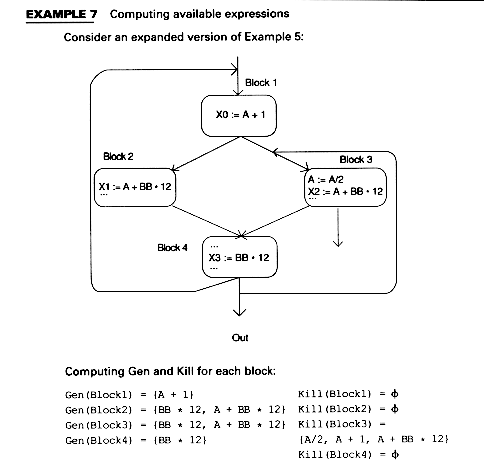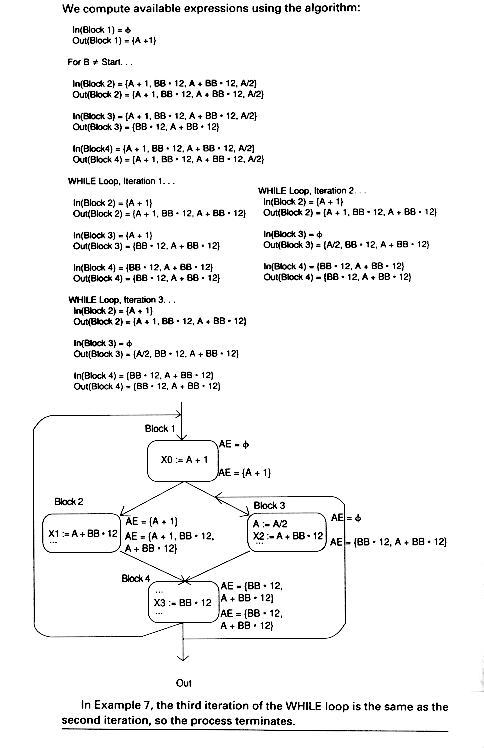Out(B) = (In(B) - Kill(B))  Gen(B)
Gen(B)
Finding available expressions is similar to finding reaching definitions. Again we use the variables In(B), Out(B). We use the term A op B to mean any expression, even one which has more that one op, as in A + BB * 12.
Transfer Function Rules
For available expressions, the variables Kill(B) and Gen(B) are defined as follows:
that is, X or Y occurs on the left of an assignment statement or in a read statement.
EXAMPLE 6 Gen and Kill sets for a block B
Consider the following statements in some basic block B
A := B + C
X := Y - Z
B := X + Y
X := A * B
In Example 6, Gen(B)={Y-Z, A*B}. Kill(B)={B+C,X+Y} plus other
expressions such as, say, X + Q, since X is on the left-hand side of an
assignment in B.
Transfer Equation
We have "rigged" the definition of Gen and Kill for available expressions so that the equation of Out is the same as that for reaching definitions
Out(B) = (In(B) - Kill(B))  Gen(B)
Gen(B)
Confluence Rule
An expression is available at a point only if it is computed on all preceding paths:
In(B) =  Out(P)
Out(P)
P  Pred(B)
Pred(B)
We initialize In(start) =  even though it may have predecessors.
even though it may have predecessors.
Solving the Equations
This time we want the largest solution since we don't want to rule out an expression unless we find a path along which it is unavailable. Thus, we will initialize the In and Out sets to make every expression available and then eliminate expressions that are not readily available. Here, we throw things out (via intersection) the way reaching definitions threw things in (via union).
Algorithm
Available Expressions
In(Start) =Out(Start) = Gen(Start) FOR B <> Start DO In(B) = All Expressions in program Out(B) = (In(B) - Kill(B))
Gen(B) ENDFOR WHILE there are changes DO FOR B <> Start DO In(B) =
Out(P) P
Pred(B) Out(B) = (In(B) - Kill(B))
Gen(B) ENDFOR ENDWHILE


